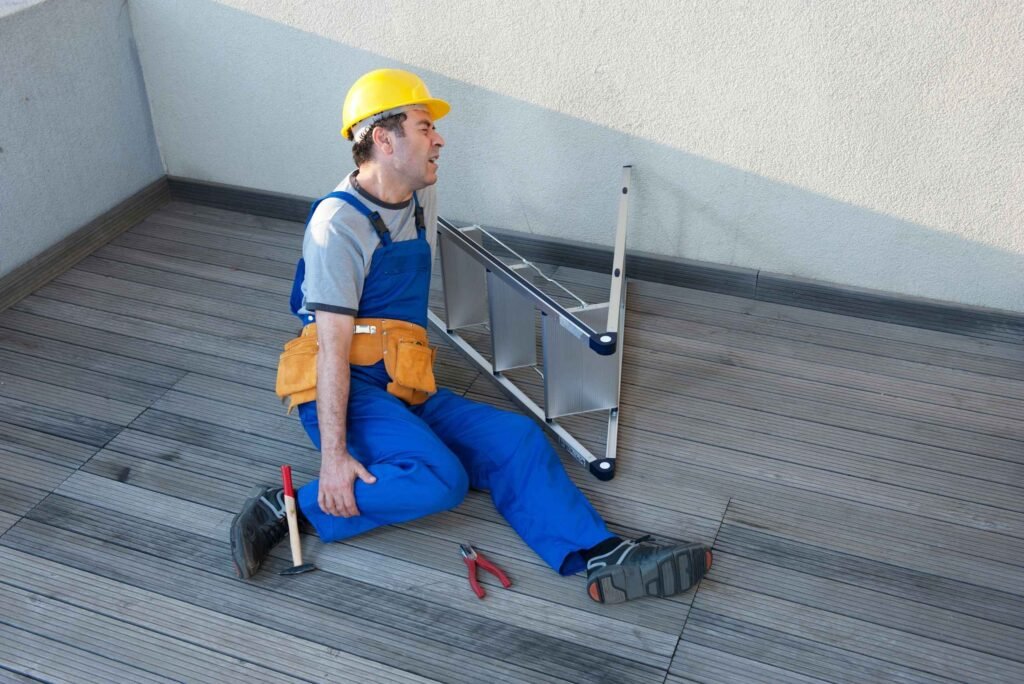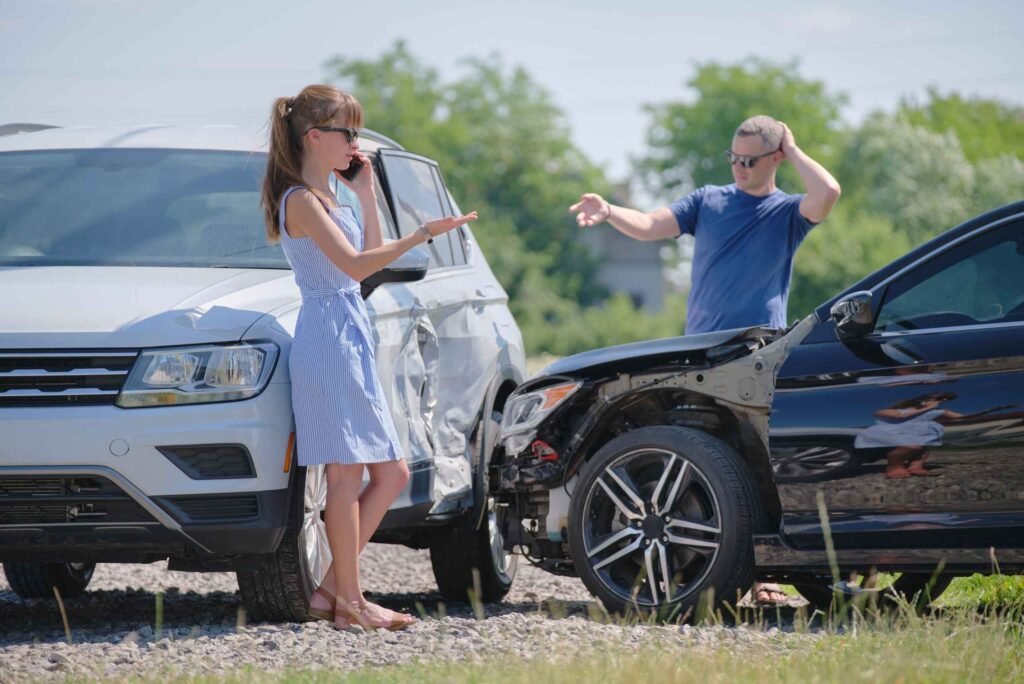What Is the Speed Limit on The A9 In Scotland?

Sarah John's
Legal Writer
The A9 Perth to Inverness is a major road in Scotland that runs from the city of Perth to Inverness. It is one of Scotland’s busiest roads and one of the most dangerous. In 2022, there were 1,233 accidents on the A9, resulting in 10 fatalities and 250 serious injuries.
If you have suffered injury or illness in an A9 accident and believe it was due to someone else’s negligence, contact us. Our network has many excellent Solicitors specialising in personal injury claims Scotland. They have helped numerous clients with their Car accident claims in Scotland, and they can also assist with your claim. They will make sure you get the maximum amount of compensation for your injury, whether it’s a major injury or a minor injury.
Table of Contents

Get In Touch With Your Local Office:
With local knowledge and a national network of experts, we have the experience you can count on.
Speed Limit Significance and Importance:
The national speed limit is a legal requirement that all motorists must obey. Its purpose is to keep drivers safe and to reduce the risk of accidents. The speed limit on the A9 is different on the sections of the road; on single-carriageway sections, the speed limit is 60 mph for cars and motorcycles. On dual carriageway sections, the speed limit is 70 mph. There are also some sections of the A9 where the speed limit is lower, such as in built-up areas or near school areas.
Speed Limits in Urban Areas on the A9
There is only one urban area on A9, which is Inverness, and the speed limit there is 30 mph for all vehicles. This is because there is more traffic in urban areas, and the roads are usually narrower as well. It is important to obey the speed limit in urban areas on the A9 to reduce the risk of accidents.
Speed Limits in Rural Areas on the A9
In rural areas on the A9, the speed limit is 60 mph for cars and motorcycles. This is because the roads are wider and straighter in rural areas, and there is less traffic. However, when passing through small villages along A9, such as Crieff, Dunkeld, Pitlochry, Dalwhinnie, Grantown-on-Spey, Kingussie, and Aviemore, the speed limit is reduced to 30 mph.
It is essential to be aware of and follow the A9 speed limit in rural areas on the A9 to avoid accidents.
Speed Limits near Built-up Areas on the A9
Near built-up areas on the A9, the speed limit is 30 mph. This is because Built-up areas on the A9 have a high concentration of buildings and other structures. These areas are typically more congested than rural areas, with more pedestrians and cyclists on the roads. It is important to obey the speed limit near built-up areas on the A9 to reduce the risk of accidents.
Speed Limits near Roadworks on the A9
Near roadworks on the A9, the speed limit is 40 mph. This is because roadwork can be dangerous, and the speed limit is lower to help keep drivers safe. It is essential to obey the speed limit near roadworks on the A9 to reduce the risk of accidents.
Speed Limits for Heavy Goods Vehicles on the A9
The speed limit for heavy goods vehicles (HGVs) on the A9 is 50 mph. This is because HGVs are more challenging to control at high speeds and can cause more damage in an accident. It is important to obey the speed limit for HGVs on the A9 to reduce the risk of accidents.
What about Signing for the A9 Average Speed Cameras?
Average speed cameras are used on some sections of the A9 to enforce the speed limit. These cameras work in groups of two or more and record the time a vehicle travels between two points; if the vehicle exceeds the speed limit, it will get a speeding ticket.
The average speed cameras A9 are clearly signed, and in some sections of the road, there are repeat signs, so there is no excuse for speeding in these areas. The signs usually state the speed limit, the distance between the cameras, and the penalties for speeding.
Why Is the A9 So Dangerous, And What Do Motorists Need to Be Aware Of?
A9 is one of the most dangerous roads in Scotland for a number of reasons, some of which are as follows:
Narrow and winding sections: The A9 is a single-carriage road for much of its length, meaning there is only one traffic lane in each direction. This can make it difficult for slower vehicles to pass and can lead to faster vehicles doing dangerous overtaking manoeuvres. In addition, some sections of the road are narrow and winding, making it difficult to see around corners and judge the distance of oncoming traffic.
High winds and fog: The A9 road passes through a mountainous region, and that’s why it is prone to high winds and fog. These conditions can make it difficult to see the road ahead and can increase the risk of accidents if you are not careful.
Wildlife crossings: The A9 passes through areas of high wildlife density; this includes deer, sheep, and cattle. These animals cross the road frequently; this can be dangerous for motorists as it can cause various accidents.
However, the A9 is not the most dangerous road in Scotland because of the above three reasons. In fact, the majority of accidents on the A9 were due to driver mistakes rather than due to road conditions. For example, many accidents occur due to motorists trying to overtake in unsafe conditions or by driving too fast.
Penalties for Speeding Violations on the A9:
The penalties for violating speed regulations on the A9 can vary depending on the severity of the situation. For example, If it’s your first time over-speeding by ten mph or less, you could get a fine of up to £100. If it’s a more serious offence, such as over-speeding by 20 mph or more, it can result in a fine of up to £1,000 and three penalty points on your driving license.
Enforcement of Speed Limits on the A9:
The Average Speed Camera A9 system is used on certain sections of the road to monitor and enforce the speed limit; the police use a variety of methods to enforce the speed limit, including:
Speed traps: These are static locations on the road where the police fix the radar guns or laser speed guns to measure the speed of vehicles passing by.
Mobile patrols: These are patrol cars equipped with radar guns and laser speed guns; they move around the road and can measure the speed of vehicles passing by at any time.
Average speed cameras A9: These average speed cameras A9 are in fixed locations on different sections of the road, especially in places where it is difficult to enforce the speed limit otherwise.
Temporary Speed Restrictions on the A9:
Sometimes temporary speed restrictions are imposed on the A9 road due to various natural or artificial reasons, such as:
Roadworks: When there are roadworks taking place on the A9, the speed limit is lower to ensure the safety of workers and motorists.
Weather conditions: If the weather is bad, such as during heavy rain or snow, the speed limit may be lowered to help drivers stay safe.
Accidents: If there has been an accident on the A9, the speed limit may be reduced to help reduce the risk of further accidents.
You will see sign boards whenever you see temporary speed restrictions on A9. These signs usually state the reason for the speed restriction, the new speed limit, and the distance to the end of the restriction.
Variable Speed Limits on the A9:
Variable speed limits (VSL) are electronic signs that display the current speed limit, which can change depending on the traffic conditions. They are used on some sections of the A9 to better manage traffic flow and improve safety.
For example, if there is a lot of traffic on the A9, lower the speed limit on the VSL to help reduce congestion. Or, if there is bad weather, lower the speed limit on VSL to help drivers stay safe.
VSLs are a relatively new technology, but they are incredibly effective in improving traffic flow and road safety. A study of VSLs on the A9 concluded that they reduced congestion by up to 20% and the number of accidents by up to 15%.
Motorists should obey temporary speed restrictions, even if they are lower than the normal speed limit. This is because the restrictions are in place for a reason, and they are there to help keep drivers safe.
Safety Considerations on the A9:
The A9 is a dangerous road for a number of reasons. The road is narrow and winding in some sections, and there are frequent high winds and fog. There are also a number of wild animals crossing the road, which can be dangerous if you are not careful.
Here are some safety considerations that motorists should be aware of when driving on the A9:
Obey the speed limit A9: This is the most important safety consideration on the A9, as speeding is a major cause of accidents on this road.
Be aware of the road conditions: The A9 can be dangerous in bad weather conditions, such as during heavy rain or snow, so be sure to adjust your speed and driving style accordingly.
Be aware of wildlife: There are a number of wildlife, such as deer, sheep, and cattle, crossing the road. It is important to be aware of the possibility of animals crossing the road before you; slow down and be prepared to stop if you see an animal on the road.
Drive defensively: This means being aware of your surroundings and preparing yourself for the unexpected. Be sure to leave plenty of space between you and the car in front of you, and prepare to brake suddenly if necessary.
Take breaks if you are feeling tired: Driving while you are tired is a major cause of accidents; if you are feeling tired, pull over, take a break, and maybe drink some coffee.
Don’t drink while driving: Driving drunk is one of the major causes of accidents not just on A9 roads but any road in the world, so don’t do that if you value your safety.
By following these safety considerations, motorists can reduce their risk of being involved in an accident on the A9.
DEDICATED CLAIMS ADVISORS
Our dedicated claims advisors are always available to offer free legal advice.
100% NO WIN NO FEE CLAIMS
All our claims are processed on a No Win No Fee basis; you pay nothing if you lose.

MILLIONS SECURED IN DAMAGES
To date, we have secured millions in damages.
THOUSANDS OF SATISFIED CLIENTS
To date, we have helped thousands of clients recover compensation and continue to do so.
Road Conditions and Dangers on the A9:
The A9 is a long and winding road, and the road conditions can be different on different sections of the road; some of the common road conditions and dangers on the A9 include:
Narrow roads: The A9 is a narrow road in some sections, which can make it difficult to pass other vehicles; drive slowly and carefully in these areas.
Windy roads: The A9 road can be windy in some sections, which can make it difficult to control your vehicle; slow down and take extra care in these areas.
Fog: The A9 can be foggy in some sections, which can significantly reduce your visibility and make it difficult to see other vehicles; drive slowly and use your headlights in these areas.
Wildlife crossings: As mentioned before, a number of animals regularly cross the A9 road. This can be dangerous for both the driver and the animal, such as hitting the animal and damaging both the animal and your vehicle, getting distracted by the animal and colliding with another vehicle, etc.
Potholes: The A9 has potholes in some sections, which can damage your vehicle, so be sure to drive slowly and carefully in these areas.
Construction zones: There are often construction zones on the A9, which can narrow the road and create other dangers; pay attention to the signs and drive slowly in these areas.

Can’t Work Due To Illness Or Injury?
Use our free online claim check tool and find out in minutes if you have a claim.
Speeding and Accident Rates on the A9:
Speeding was a major factor in all the past accidents on the A9. In 2022, there were 1,233 accidents on the A9, resulting in 10 fatalities and 250 serious injuries; of these accidents, 35% were due to speeding. If you’ve been involved in an accident on the A9, our panel of No Win No Fee Solicitors in Scotland can help you pursue compensation without upfront costs.
There are a number of reasons why speeding over the speed limit can lead to accidents on the A9. First, it can reduce the amount of time that drivers have to react to sudden dangers. This can lead to accidents if a driver cannot stop in time to avoid a collision. Second, speeding can make it more difficult for drivers to control their vehicles, leading to accidents if a driver loses control of their vehicle in a dangerous situation.
A9 Future Upgrade plans:
The A9’s complete upgrading to a dual carriageway will not be completed until 2035, ten years later than first anticipated. Originally scheduled to finish by 2025, the project has run into many obstacles. Now, the Scottish Government wants to finish half of the road by 2030. Construction is scheduled to start in the summer of 2024, with the first section, connecting Tomatin and Moy, anticipated to be completed by 2027. The £3.7 billion project will be completed in sections: 50% of the road will be upgraded by 2030, 85% by 2033, and the whole route by 2035. Although the Government guarantees that the construction will pay off in the long run, many Highlands residents are annoyed by the delays and point to safety issues as well as lost lives on the present route. Some MSPs remain sceptical, urging that construction begin without additional delay.
Easy Ways To Get In Touch
We are here to help. Give us a call, request a call back or use our free claim check tool to get in touch with our friendly legal team. With local knowledge and a national network of experts, we have the experience you can count on.





